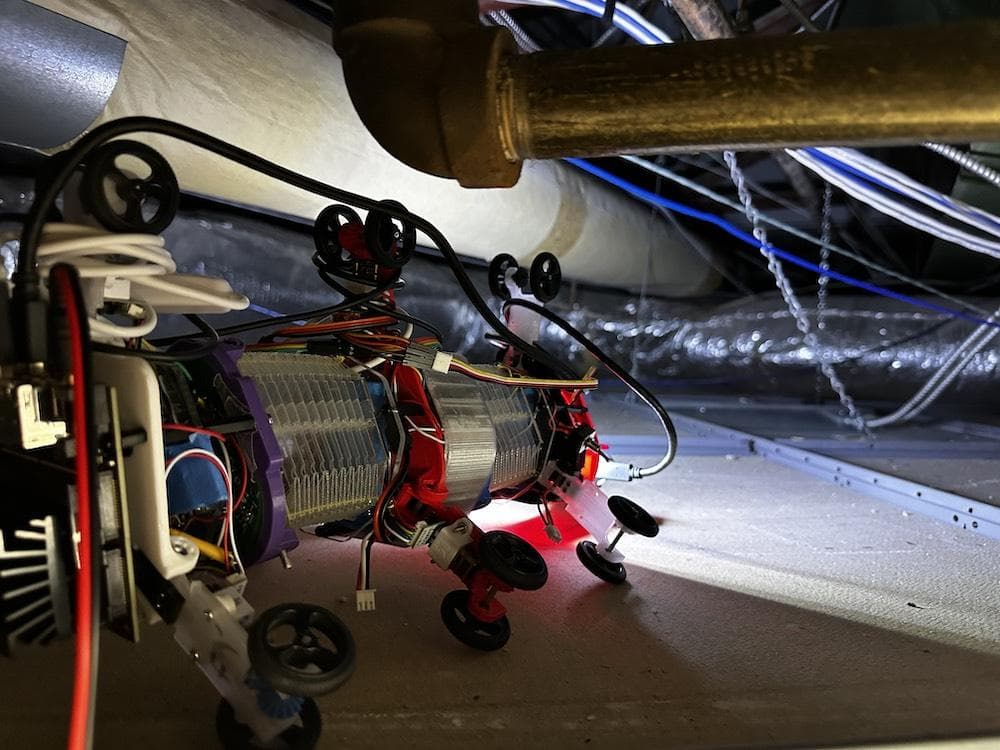
The Robotics Roundup is a weekly newspost going over some of the most exciting developments in robotics over the past week.
In today’s edition we have:
- TRI is developing a new method to teach robots overnight
- Spikelangelo, an AI-powered robot, helps patients at Cook Children’s make art
- The Lizard You Actually Want Crawling in the Walls
- Soft Robot Walks by Repeatedly Blowing Itself Up
- A framework for risk-aware robot navigation in unknown environments
TRI is developing a new method to teach robots overnight
Toyota Research Institute (TRI) is demonstrating advancements in robotic learning that allow robots to learn new skills quickly. Using a combination of traditional robot learning techniques and diffusion models, TRI has trained robots on 60 skills and counting. The method allows robots to function in diverse settings and adapt to new tasks, a crucial aspect for robots operating in real-world environments. The system utilizes teleoperation and force feedback to train the robots, and then neural networks continue training overnight. TRI is also exploring fleet learning, where robots can teach and learn from each other’s experiences. The research aims to create more capable and adaptable robots that can interact with novel objects and execute actions based on trained behaviors.
Spikelangelo, an AI-powered robot, helps patients at Cook Children’s make art
Artist Pindar Van Arman developed Spikelangelo or Spike, a robot which helps patients at Cook Children’s Medical Center create self-portraits from their hospital rooms. The robot uses algorithms that combine imagination, logic, and reflection to assist in the painting process. Patients can send input to the robot using a designated tablet. Spikelangelo is seen as a supplement to human art therapists, allowing them to serve more people or engage current patients in new ways. The project aims to create moments of magic and provide a therapeutic outlet for patients at the hospital.
The Lizard You Actually Want Crawling in the Walls
Soft Robot Walks by Repeatedly Blowing Itself Up
Researchers from Cornell University have developed a small-scale, soft internal-combustion engine as an actuator for insect-sized robots. The actuator uses methane vapor and oxygen injected into a soft combustion chamber, with an ignition spark causing the chamber to balloon upward, generating significant forces. Four of these actuators power a quadruped robot that can jump 59 centimeters and carry 22 times its weight, exhibiting near-insect level performance. The actuator is durable, capable of operating continuously for more than 750,000 cycles without performance degradation. The researchers are now focusing on slowing down the actuators to enable walking and exploring the possibility of using them in large robots as musculature.
A framework for risk-aware robot navigation in unknown environments
Researchers from Université Clermont Auvergne, CNRS, and the University of Toronto Institute of Aerospace Studies have developed a framework to enhance the navigation capabilities of robots in unknown three-dimensional environments. The framework incorporates a risk-aware path planning algorithm and a physically interpretable risk function to assess the level of risk associated with specific routes. The researchers tested their framework in simulations using real-world urban environment data and found that it could identify paths that passed over obstacles if the risk was tolerable. They plan to further improve the framework’s path planning component and risk metrics and conduct larger experiments in urban and rural settings. The development of this framework could enable the broader use of mobile robots in real-world applications.


